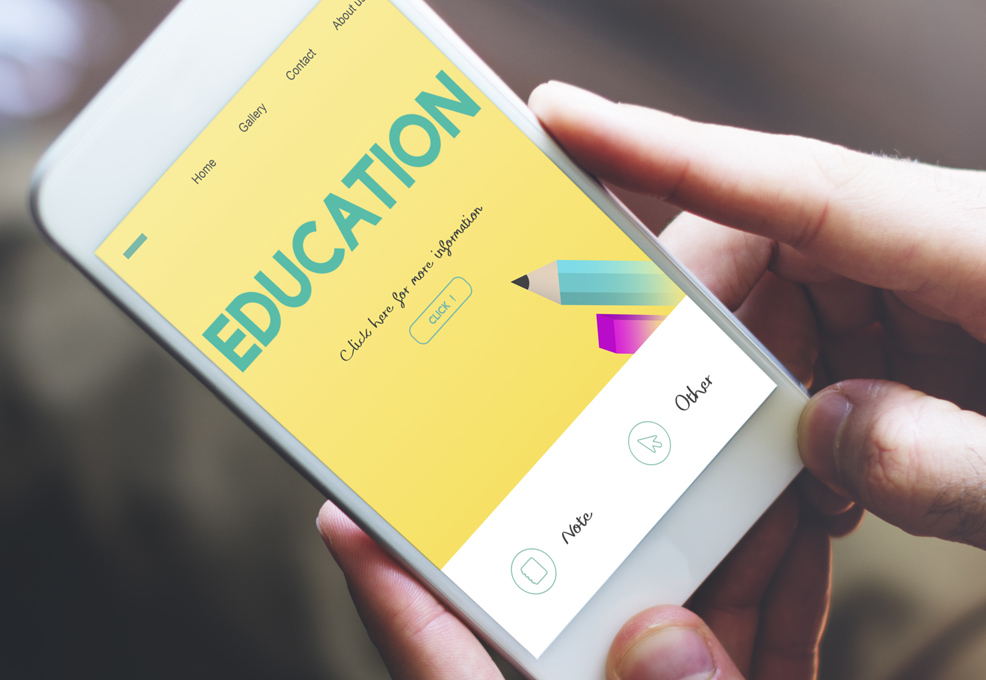COVID-19 mortality is associated with test number and government effectiveness

Author(s)
Tzu-Hua WangBiography
Tzu-Hua Wang is a professor of the Department of Education and Learning Technology, College of Education, National Tsing Hua University, Taiwan (R.O.C.). He is also the Associate Dean of the College of Education and the Director of the Research Center for Education and Mind Sciences, National Tsing Hua University, Taiwan (R.O.C.). His research interests include e-Learning, e-assessment, information literacy, integrating ICT into teaching and learning, Internet addiction/problematic Internet use, science education and interdisciplinary STEM/STEAM education. He has published more than 20 academic papers in SSCI journals. He also has more than 15 academic papers, written in Chinese, published in key academic journals of Taiwan. He won two academic awards from the Ministry of Science and Technology in Taiwan (R.O.C.), including the Ta-You Wu Memorial Award in 2008 and the Outstanding Research Award in 2014. He serves as the Lead Guest Editor of a special issue published in the International Journal of Science and Mathematics Education in 2019 and is Editor-in-Chief of the Tsing Hua Journal of Educational Research. He also serves as reviewer for several SSCI journals, including Computers & Education, Journal of Computer Assisted Learning, International Journal of Science and Mathematics Education, etc.
Academy/University/Organization
National Tsing Hua University-
TAGS
-
Share this article
You are free to share this article under the Attribution 4.0 International license
- HUMANITIES & SOCIAL SCIENCES
- Text & Image
- November 22,2019
Interdisciplinary STEM/STEAM education receives attention of researchers and teachers; however, there is no well-established interdisciplinary STEM/STEAM teaching model, which thus still requires further investigation. In 2018, National Tsing Hua University (NTHU) in Taiwan initiated the establishment of the “Tsing Hua STEAM School.” The DDMT teaching model adopted by the “Tsing Hua STEAM School” is an effective framework for teachers to develop a successful interdisciplinary STEM/STEAM course. The DDMT teaching model includes four steps: discover, define, model & modelling, and transfer. An e-assessment system, named “Web-based Assessment-driven Context-based e-Learning system (WACEL system),” is also developed to assess students’ learning effectiveness in the interdisciplinary STEM/STEAM education. The WACEL system allows students to answer context-based test items and be engaged in cooperative problem-solving with their peers in the Web browser. The context-based test items are not administered in the form of traditional multiple-choice test items. Instead, in a pre-set multimedia story context, students follow the storyline and make use of their scientific concepts to answer a series of questions in the browser. In this article, the DDMT teaching model and WACEL system are introduced.
Competency-based teaching and learning is an international education trend. Among “Future of Education and Skills 2030 (https://www.oecd.org/education/2030-project/)” proposed by the Organization for Economic Co-operation and Development (OECD), it is pointed out that future education has four perspectives, namely knowledge, skills, attitudes and values. These would turn into competencies and actions to shape a future world with better well-being. In other words, the objective of students’ education is to develop human civilization and happiness. Competency means the flexible application of knowledge and skill in daily life, which can be expressed in self-learning, problem-solving and adapting to the future. Interdisciplinary STEM/STEAM education, which has received increasing attention in recent years, is a key example of competency-based teaching and learning (Wang, Lim, Lavonen, & Clark-Wilson, 2019). According to Wang et al., STEM/STEAM education facilitates interdisciplinary application of science, technology, engineering, art design and mathematics so that students can achieve meaningful learning for their daily life. However, there is no well-established interdisciplinary STEM/STEAM teaching model. It still requires further investigation (Bybee, 2013). In 2018, the National Tsing Hua University (NTHU) in Taiwan initiated the establishment of the “Tsing Hua STEAM School” (https://tsinghuasteam.org) which aims to address this issue.
The vision of the “Tsing Hua STEAM School” is to popularize STEAM education so that it can be applied in official school hours; all students will thus have equal opportunities to receive high-quality STEAM education so that the goal of local cultivation and employment of interdisciplinary talents can be achieved. The “Tsing Hua STEAM School” emphasizes K-12 students’ gaining of interdisciplinary learning experiences by solving and understanding daily life phenomena and problems via maker practices. During the process, computational thinking and programming ability would be developed, and students’ competencies in science, technology, engineering, art design and mathematics can be enhanced step by step (Wang et al., 2019). The “Tsing Hua STEAM School” is a school alliance. All K-12 schools which agree with the vision of the “Tsing Hua STEAM School” can join the alliance. Teachers from participating schools develop the STEAM curriculum together, and the topics of the curriculum have to be related to solving problems encountered and observed in daily life. Moreover, they need to be connected to national curriculum standards. Course content needs to focus on science and mathematics learning to improve students’ learning motivation through maker practices based on knowledge and skills of technology, engineering, and art design. All developed courses have to go through pilot teaching and set up the evaluation mechanism of learning effectiveness. Based on this, the courses of the “Tsing Hua STEAM School” are developed according to the DDMT teaching model, which includes four steps: discover, define, model & modelling, and transfer (Wang et al., 2019). These steps consist of scientific inquiry, design thinking, and maker practice. The DDMT teaching model provides a scaffold for teachers to develop their competency-based and interdisciplinary STEM/STEAM teaching activities (Wang et al., 2019).The DDMT teaching model was first proposed by Professor Tzu-Hua Wang and Mr. Kee-Fui Turner Lam in early 2019. The model was later fine-tuned by the academic team of the “Tsing Hua STEAM School” (https://tsinghuasteam.org). Below is an explanation of each step in the DDMT teaching model (Figure 1):

Figure 1 DDMT teaching model
1.Discover: context awareness, motivation and core problem
In this step, the teacher creates a learning environment where students can observe and understand daily life phenomena; the teacher tries to guide students to make use of technologies to collect data or to reference and identify the problems to be solved in the daily life phenomenon. In this step, it is expected that students will develop the abilities and attitudes to be aware of and show care about daily life problems.
2.Define: problem definition, concept definition and solution planning
Based on the problems to be solved identified in the previous step and related information collected, the teacher guides students to discuss the criteria of problem-solving and the related learning concepts of STEAM subjects in this step. Students are also encouraged to propose their ideas to solve the problems.
3.Model & Modelling: modelling, concept alignment, model selection, prototyping, debugging and final model
Following the problem-solving ideas proposed in the previous step, the teacher assigns students into groups and makes each group design its own problem-solving model, which is a planning book including text, figures, illustrations or formulas. The problem-solving models are also connected with learning concepts of STEAM subjects. Through sharing, discussion and argumentation, each group can modify the original problem-solving model. After each group explains its own model, students can select appropriate problem-solving models and put them into practice. They can also conduct an experiment to test and revise the model. The model can therefore be gradually fine-tuned. Lastly, each group would have a finalized model and its product.
4.Transfer: model sharing, model transfer and evaluation
In this step, each group shares the problem-solving model and product constructed in the previous step with other groups; they then apply the models in different situations, modifying the original models to conform to the new context, and then evaluate their effectiveness.

Figure 2. Context-based test item in the WACEL system. A: Collected objects. B: Working area. Students can select objects from Zone A and use them in Zone B. C: Students can do a specific action.

Figure 3. A learning task of fixing an electronic bell.
The DDMT teaching model includes scientific inquiry, design thinking and maker practice. The findings show that it is effective in terms of promoting competency-based and interdisciplinary STEM/STEAM education. The DDMT teaching model is also effective in terms of facilitating students’ achievement of the goals of “Future of Education and Skills 2030” proposed by the OECD. Based on the DDMT teaching model, the professional development courses and certification mechanisms for in-service and pre-service teachers have been fully developed. The DDMT teaching model has been promoted to K-12 schools in Taiwan and also introduced to some educational institutions in Singapore,Malaysia and Indonesia. The DDMT teaching model is currently taken as the scaffold to develop mechanisms for evaluating teachers’ STEAM teaching and curriculum development ability, and students’ STEAM competencies. Regarding students’ STEAM competencies, the WACEL system is now used to develop a series of context-based test items; it is expected that students’ operations and answering history online can be fully recorded and used to evaluate their learning achievement and competencies of working together to solve problems and doing scientific inquiry after going through the DDMT teaching model. Professor Tzu-Hua Wang welcomes all researchers and teachers who are interested in the DDMT teaching model and WACEL system to work on research together.
References
Bybee, R. W. (2013). The Case for STEM Education: Challenges and Opportunities. National Science Teachers Association, NSTA Press, Arlington, Virginia.
Wang, T. H., Lim, K. Y. T., Lavonen, J. & Clark-Wilson, A. (2019). Maker-Centred Science and Mathematics Education: Lenses, Scales and Contexts. International Journal of Science and Mathematics Education, 17 (suppl 1), 1-11.
STAY CONNECTED. SUBSCRIBE TO OUR NEWSLETTER.
Add your information below to receive daily updates.




